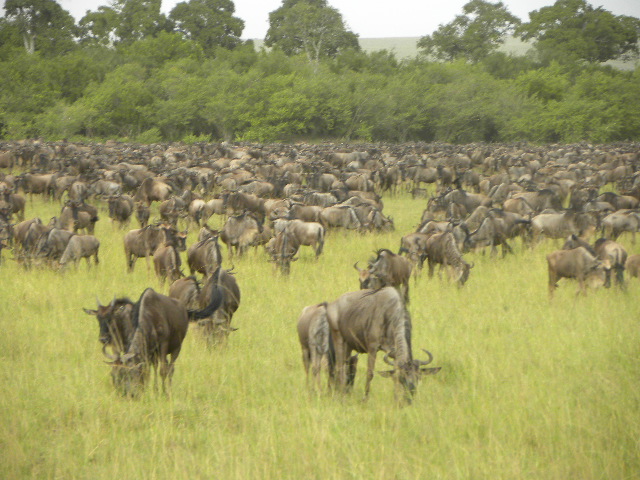During the second half of July, huge herds of migrating
wildebeest and zebra crossed over from the Serengeti in Tanzania to Mara in
Kenya. These massive herds have not been seen in recent years the Mara.
Weather
It is cool with light rain.
The Wildebeest
The wildebeest are grazing on the short and very palatable
grass that crops up after the controlled fire to get rid of the old grass. Soon
after the grass fires the rains started in June resulting in fresh grass covering
the national reserve.
During the past few weeks great herds have moved up north
from the south (Serengeti), across the Sand River and into the Mara where the
herds split.
Some herds moved east to the plains of Meta, Burungat and Possee
heading north towards the Talek River and Olkeju Rongai River treating all to superb
river crossings of the wildebeest. Mara Explorer and Mara Intrepids Camps are
in the midst of the wildebeest migration.
Another big herd moved west after crossing the Sand River
around the Lookout Hill. They eventually made it to the Mara River where many
crossings happened over several days. As they crossed into the Mara Triangle
they seemed to be headed towards the western side of the park.
At Double Cross the wildebeest and zebra that had earlier
crossed from the Topi Plains are returning via the eastern side of the Rhino Ridge.
The Big Cats
Lions
Since there is plenty of food during the migration season,
there are higher chances for the cubs to survive.
Ridge Pride
There are lions with six cubs from two different females.
Enkuyanai Pride
It has seven cubs from two different females.
Elephants
They are in big numbers but seem to be moving away from the
herds of wildebeest. On the eastern and the southern side of Rhino Ridge where
the migrating herds have not yet reached, there are big elephant families. The
grass is here is long and very lush for the elephants to graze.








































